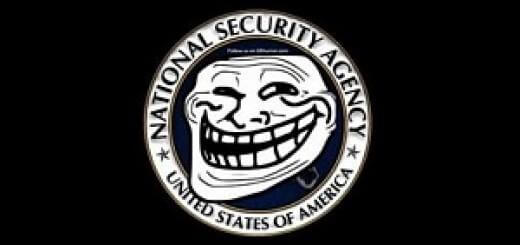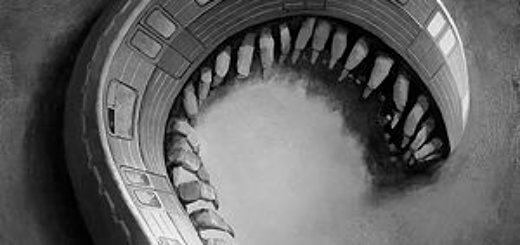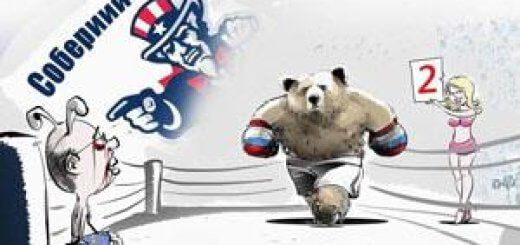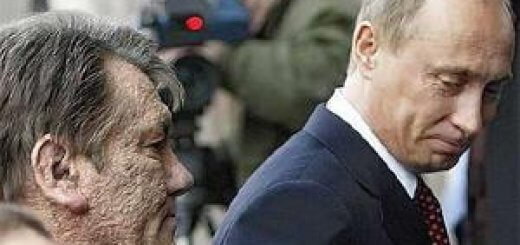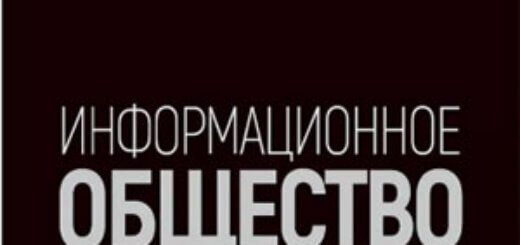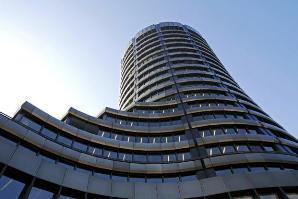
Ten times a year – every month except August and October – a small group of well-dressed men come to the Swiss city of Basel. With small suitcases and attaché cases in hand, they depart for Euler Hotel, opposite the train station. In this sleepy town they come from completely different places, such as Tokyo, London and Washington, D.C., for regular meetings of the most exclusive, secret and influential supranational club in the world.
Each of the dozen participants of the meetings has a separate office in the club with secure telephone lines to the homeland. The club has a permanent staff of about 300 people, including drivers, cooks, security guards, messengers, translators, stenographers, secretaries and assistants. They also have an excellent science laboratory and a state-of-the-art computer system, as well as an indoor country club with tennis courts and a swimming pool a few kilometres from Basel.
Members of this club are several influential people who daily set interest rates, credit availability, as well as the monetary base of banks in their country. These include the heads of the Federal reserve, the Bank of England, the Bank Of Japan, the Swiss national Bank and the German Bundesbank. The club operates a Bank with a Fund of $40 billion in cash, government securities and gold, representing about one tenth of the world’s available precious metals. The profits that the rent of this gold brings (the value of which is second only to Fort Knox’s reserves) are more than enough to pay for the maintenance of the entire organization. And the explicit purpose of these monthly meetings for the elected is to coordinate and, if possible, control all monetary transactions of the developed world. The club’s meeting place in Basel is a unique financial institution called the Bank for international settlements, or BIS.
The BIS was founded in may 1930 by European and American bankers and diplomats to collect German reparations payments after world war I (hence its name). It was a truly extraordinary agreement. Although the BIS was established as a commercial public Bank, its immunity from government interference and even taxation, both in times of peace and war, was guaranteed by an international Treaty signed in 1930 at the Hague. Despite the fact that its depositors are Central banks, BIS earns on all operations. And since his activities are very profitable, he does not need any government subsidies or assistance.
Since it also provided European Central Banks in Basel with a safe and convenient storage for their gold reserves, it quickly became a Bank for Central banks. With the worsening global depression of the 1930s and the financial panic that erupted in Austria, Hungary, Yugoslavia, and Germany, the managers of key Central banks feared that without a fully coordinated bailout, the entire global financial system would collapse. The obvious meeting point for this desperately needed coordination was the BIS, where they would in any case regularly come to organize gold swaps and sign agreements to pay damages from the war.
Even despite the fact that isolationist Congress officially did not allow the Federal reserve to participate in the activities of the BIS or of ownership in it (shares of the BIS were administered by First National City Bank), Chairman of the fed secretly come to Basel for important meetings. World monetary policy was obviously too important an issue to be left to public policy. During the Second world war, when countries, if not their Central banks, took part in it, the BIS continued its activities in Basel, however, monthly meetings temporarily stopped. In 1944, after being accused by the Czech Republic of laundering Nazi gold stolen from Europe, the American government supported a resolution at the Bretton woods conference calling for the elimination of BIS. It was naively believed that the new international monetary Fund could take over its settlement and settlement functions.
However, it was impossible to replace what existed under the guise of the international clearing house: a supranational organization for the creation and implementation of a global monetary strategy, which could not be engaged in a democratic international organization like the UN. Heads of Central banks, which were not intended to give the club to someone, secretly suppressed American resolution.
After the Second world war, the BIS became the main clearing house of European currencies, and behind the scenes – a favorite meeting place for Central bankers. When the dollar was attacked in the 1960s, the BIS came to the rescue of the us currency by organizing large cash and gold swaps. Undoubtedly, there was a certain irony in the fact that, as noted by the President of the Bank, “the United States, who wanted to liquidate the BIS, suddenly in need of him.” In any case, fed became the main member of club, and either his Chairman Paul Volcker (Paul Volcker), either the managing Henry Wallich (Henry Wallich) attended every “Basel weekend.”
In the beginning, the heads of Central banks sought to complete anonymity of their operations
Their headquarters were in an abandoned six-story hotel, the Grandet Savoy Hotel Universe, with an Annex above the adjoining Frey chocolate Shop. They deliberately did not place a BMR sign on the door, so bankers and dealers used the cafe as a convenient reference point. It was in the wood-panelled rooms above the store and the hotel that decisions were made to devalue or protect currencies, fix the price of gold, regulate offshore banking and raise short-term interest rates. And although their actions created a “new world economic order”, in the words of Guido Carli (Guido Carli), the Manager of the Italian Central Bank, the society, even in Basel, remained in complete ignorance about the club and its activities.
However, in may 1977, BIS renounced anonymity, according to the sober calculation of some of its members, in exchange for a more efficient headquarters. The new building – an eighteen-story cylinder-shaped skyscraper, towering over the medieval city as some misplaced nuclear reactor, the so-called “Tower”, quickly began to attract the attention of tourists. “That was the last thing we wanted,” its President, Dr. Fritz Leutwiler, told me during an interview in 1983. – If it were up to me, it would never have been built.” During the conversation, he intently watched the screen of Reuters, which depicted the fluctuation of currencies worldwide. Despite its boring appearance, the new headquarters has all the advantages of a luxurious space and Swiss efficiency. The building is fully equipped with air conditioning and Autonomous power supply, has its own bomb shelter in the lower basement, three times duplicated fire extinguishing system (to never have to call the fire outside), a private hospital and about two hundred miles of underground archives. “We tried to create a full-fledged club house for the heads of Central banks… a house away from home,” – shared Gunther Schleiminger (Gunther Schleiminger), over the competent General Manager, who organized for me a tour of the building. On the top floor with panoramic views of three countries – Germany, France and Switzerland – there is a chic restaurant used for receptions for club members coming on Saturday evenings to “Basel weekends”. The rest of the time, except for these ten cases, the floor is empty.
On the floor below, schleiminger himself and several of his staff sit in spacious offices, overseeing the daily tasks of the BIS and controlling the activities on the other floors, as if managing the hotel in the off-season. Three of the ground floor is an apartment reserved for the bankers. They are all decorated in three colours – beige, brown and reddish brown – and each has a lithograph in the same colours above the table. Each room is equipped with a programmed phone with a quick dial, with which members of the club at the touch of a button directly communicate with their offices in the Central banks at home. Completely deserted corridors and empty offices with nameplates, sharpened pencils in cups and neat stacks of incoming correspondence on the tables resemble a Ghost town. When the club members come to the next meeting in November, the situation, according to Schleiminger, will be completely different: at each table will sit multilingual administrators and secretaries, will constantly be meetings and meetings. On the lower floors there is a computer network of BIS, which is directly connected to the systems of Central participating banks and provides instant access to data on the world monetary situation and the Bank itself, where eighteen traders, mainly from England and Switzerland, constantly prolong short-term loans on the international Eurodollar market and prevent foreign exchange losses (while selling the currency in which the loan is to be paid).
On another floor, gold traders are constantly talking on the phone, arranging loans in gold Bank for international arbitrators, thus providing Central banks with the opportunity to receive interest on gold deposits. Sometimes there is an emergency situation, for example, the sale of gold of the Soviet Union, requiring the decision of the “authorities”, as the employees of the BIS call the heads of Central banks. But most operations are standard, computerized, and risk-free. In fact, the bis Charter prohibits transactions other than short-term loans. Most of them are issued for thirty days or less, guaranteed by the government or provided with gold placed in the BIS. Last year, in fact, on the turnover of billions of dollars placed by Central banks, the BIS earned $162 million Being as experienced in this area as the BIS, the Central banks themselves hold extremely competent employees capable of investing their deposits. For example, the German Bundesbank has an excellent division of international operations and 15,000 employees – at least twenty times more than the staff of the BIS. Why, in this case, the Bundesbank and other Central Banks transfer deposits of about $40 billion to the BIS and thus allow it to earn such amounts?
One answer – of course, is secrecy. By mixing some of their reserves into what is a giant short-term mutual Fund, Central banks have created a convenient screen behind which they can hide their own deposits and withdrawals in financial centers around the world. And Central banks are clearly willing to pay a high price for the opportunity to operate under the cover of BIS.
However, there is another reason why the Central Bank regularly places deposits in the BIS: they want to provide it with sufficient profit to provide the rest of its services. Despite its name, the BIS is much more than just a Bank. From the outside, it looks like a small technical organization. Only 86 of its 298 staff are professionals. But the BIS is not a monolithic organization: under the shell of the international Bank, like Chinese boxes stacked one into another, real groups and services are hidden, which are needed and paid for by Central Banks.
The first box inside the Bank is the Board of Directors, consisting of the heads of eight European Central banks (England, Switzerland, Germany, Italy, France, Belgium, Sweden and the Netherlands), which meets every Tuesday morning at the Basel weekend. Twice a year, the Council also meets with representatives of Central banks of other countries. It thus provides a formal mechanism for interaction with European governments and international bureaucratic organizations such as the IMF or the European economic community (Common market). The Council defines the rules and spheres of influence of Central banks aimed at preventing governments from interfering in the processes. For example, a few years ago, when the Organization for economic cooperation and development in Paris appointed a low-ranking Commission to study the adequacy of Bank reserves, Central Bank leaders perceived this as an invasion of their sphere of influence and asked for the help of the BIS Council. The Council created a higher-level Commission, under the supervision of The Bank Of England, to get ahead of the OECD. The OECD took the hint and stopped trying.
For relations with the world as a whole, there is another Chinese box called the Group of ten, or simply “G-10”. In fact, it consists of 11 participants representing eight European Central banks, the American fed, the Bank of Canada and the Bank of Japan, as well as one unofficial member – the head of the Financial Department of Saudi Arabia. This influential group that controls a large part of the turnover of capital in the world, spends a long meeting on Monday “Basel weekend”. This is where – if not always – broader issues are discussed, such as interest rates, monetary base growth, economic stimulus (or suppression), and exchange rates.
Under the direct supervision of the Group of ten and to serve its special needs, there is a small unit – the “monetary and economic development Division” , which is essentially its private analytical centre. The head of this unit, the Belgian economist Alexandre Larnaca, is present at all meetings of the Group of ten and then assigns the relevant research and analysis to the six staff economists. This unit also periodically issues “economic memoranda”, giving instructions in accordance with the convenient course of the party to the heads of Central banks from Singapore to Rio de Janeiro, although they are not members of the BIS. For example, a recent Memorandum entitled “Laws and freedom of action: an essay on monetary policy in an inflationary environment” politely defused Milton Friedman’s dogma and offered a more pragmatic form of monetarism. And in may of last year, just before the conference at the summit in Williamsburg, the unit released a blue book with materials on currency intervention by Central banks, setting boundaries and circumstances for each action. At occurrence of internal disagreements, these blue books can Express positions opposite the positions of members of the BIS, but in General they reflect the opinion of the group of ten.
At lunch on the top floor of the Bundesbank, which is located in a huge concrete building (called the “bunker”) in Frankfurt, its President and senior member of the Board of the BIS Karl Otto Pohl complained to me about the monotony of the “Basel weekends” in 1983. “First, there is a meeting about the International gold pool, then, in the afternoon, the same persons appear at the summit of the Group of ten, and the next day the Board of Directors – without the US, Japan and Canada – and a meeting of the European economic community, in which Sweden and Switzerland do not participate. He said: “It takes a lot of time and effort, and has nothing to do with real business.” As Paul explained during our leisurely lunch, this is done by another level of BIS, a “secret club”.
The secret club consists of about half a dozen influential Central Bank leaders, who are in about the same position: in addition to the Field, it includes Volker and Wallich of the fed, Leitwiler of the Swiss national Bank, Lamberto Dini (Lamberto Dini) of the Bank of Italy, Haruo Maekawa (Haruo Mayekawa) of the Bank of Japan and the Governor of the Bank of England retired, Lord Gordon Richardson (Gordon Richardson), who presided over all meetings of the Group of ten over the last ten years. They all speak English fluently; in fact, Paul recalled how one day he discovered that Leutwiler in English, though German for both native. They all speak the same language to government representatives. Paul and Volker both obeyed their Finance Ministers; they worked closely with each other and with Lord Richardson, vainly trying to protect the dollar and the pound in the 1960s. Dini at the IMF in Washington solved many similar problems. Paul worked closely with Leutwiler in neighbouring Switzerland for ten years. “Some of us are old friends,” Paul said. More importantly, all these people adhere to a clearly articulated scale of monetary values.
The main value, apparently separating the secret club from the rest of the BIS, is the belief that Central banks should act independently of domestic governments. Leutwiler easy to stick to that belief, as the Swiss national Bank is privately owned (the only Central Bank not owned by the government) and completely Autonomous. (“I don’t think many people know the name of the President of Switzerland, including the Swiss themselves, “Paul joked,” but all Europeans have heard of Leitwiler.”) The Bundesbank is almost as independent; as its President, Paul is not obliged to consult with government officials or report to Parliament – even on critical issues such as raising the discount rate. He even refused to fly to Basel on a government plane, preferring his Mercedes limousine.
The fed is slightly less independent than the Bundesbank: it is assumed that Volker should periodically appear in Congress and at least receive calls from the White house, but he is not obliged to follow their recommendations. While in theory the Bank of Italy is subordinate to the government, in practice it is an elite organization operating independently and often opposing the government. (In 1979, his then Manager Paolo Baffi was threatened with arrest, but a secret club, using anonymous channels, came to his rescue). Despite the fact that the clear relationship between the Bank of Japan and the government is deliberately kept secret even for members of the BIS, its Chairman, Maekawa, at least adheres to the principle of autonomy. Finally, although the Bank of England is under the thumb of the British government, Lord Richardson was admitted to the secret club because of his personal commitment to this defining principle. But his successor, Robin Leigh-Pemberton, will probably not be allowed in this circle because of the lack of relevant business and personal contacts.
In any case, the English Bank is clear. The Bank of France is considered a puppet of the French government; to a lesser extent, but nonetheless, the secret club also perceives the remaining European banks as an extension of the respective governments, thus leaving them aside. The second and closely related belief of the members of the domestic club is that politicians cannot be trusted to decide the fate of the international monetary system. When Leutwiler became President of the BIS in 1982, he insisted not to allow any government officials to “Basel weekends”. He recalled how in 1968, the Deputy U.S. Minister of Finance Fred Deming (Fred Deming) was in Basel and stayed in the Bank. “When it became known that an official from the us Treasury came to the BIS,” he said, ” traders in the gold market, thinking that the US was going to sell its gold, staged a panic in the market.” With the exception of the annual meeting in June (called members of “the party”), when the first floor of the headquarters of the BIS is open for official visits, Leutwiler tried to rigidly adhere to this rule. “To be honest,” he admitted, ” I don’t need politicians at all. They lack the common sense of bankers.” This, in fact, sums up the inherent dislike of members of the secret club for “messing with governments,” as Paul put it.
Members of the inner club are also prone to the superiority of pragmatism and flexibility over any ideology, whether Lord Keynes (Keynes) or Milton Friedman (Milton Friedman). Instead of rhetoric or appeals, the club seeks to resolve the crisis by any means. For example, at the beginning of this year, when Brazil could not return the loan guaranteed by the Central banks in time, the secret club decided to extend the term of payment instead of collecting money from the guarantors. “We are constantly walking a tightrope without a net,” explained Leutwiler.
The LAST and, for now, most important dogma of the secret club is the belief that when a bell rings on any Central Bank, it rings on them all. When Mexico was threatened with bankruptcy in the early 1980s, it was not so much the welfare of the country that worried the club, but rather, as Dini put it, “the stability of the banking system.” For several months, Mexico took loans from the short-term interbank loan Fund in new York – which allowed all banks recognized by the Fed – to pay interest on their foreign debt in the amount of $80 billion. Every night the country had to borrow more to pay interest on last night’s operations, and by August, Deanie said, Mexican loans were nearly a quarter of all “Federal funds,” as these one-day loans were called in the banking environment.
The fed was faced with a dilemma: if it suddenly intervenes and forbids Mexico to use the interbank market in the future, the next day the country will not be able to pay its huge debt, and 25% of all funds of the banking system will be frozen. But if the fed allows Mexico to take out new loans in new York, within a few months it will suck up most of the interbank Fund, forcing the fed to significantly increase the monetary base. Obviously, this situation was the reason for an emergency meeting of the secret club. After talking with Miguel Mancera, Director of the Bank of Mexico, Volker immediately called Leitviler, who was vacationing in the Swiss mountain village of Grizon. Leitwiler understood that the whole system was in danger of exploding a financial time bomb: even though the IMF was willing to give Mexico $4.5 billion to ease the pressure on a short-term loan, approval of the loan would take several months of bureaucratic delays. And Mexico needed an urgent loan of $ 1.85 billion to leave the market for one-day loans, to which Mansera agreed. But less than forty-eight hours Leutwiler contacted by members of a secret club and provided a temporary bridge loan.
While the financial press reported that $1.85 billion came from the BIS, almost all the funds were provided by members of the club. Half gave the United States – $600 million transferred from the stabilization Fund of the Ministry of Finance, another $325 million issued by the fed; the remaining $925 million received from the deposits of the Bundesbank, the Swiss national Bank, the Bank of England, the Bank of Italy and the Bank of Japan, deposits guaranteed by these Central banks, nominally came from the BIS (the BIS itself lent a symbolic amount secured by Mexican gold). In this activity, BMR is almost no risk; he just provided a convenient cover for the inner club. Otherwise, all its members, and especially Volker, would have been subjected to political pressure to save a developing country. In fact, they remained true to their core values: saving the banking system itself.
In public, members of the internal club rant about the ideal of preserving the character of the BIS, so as not to turn it into a world lender of last resort. However, behind the scenes, they will undoubtedly continue their manipulation in defense of the banking system, in which point of the world would not show its maximum vulnerability. In the end, at risk, first and foremost, the money of Central banks, not BMR. And the secret club will also continue to operate under his mask and pay the appropriate price for this cover.
